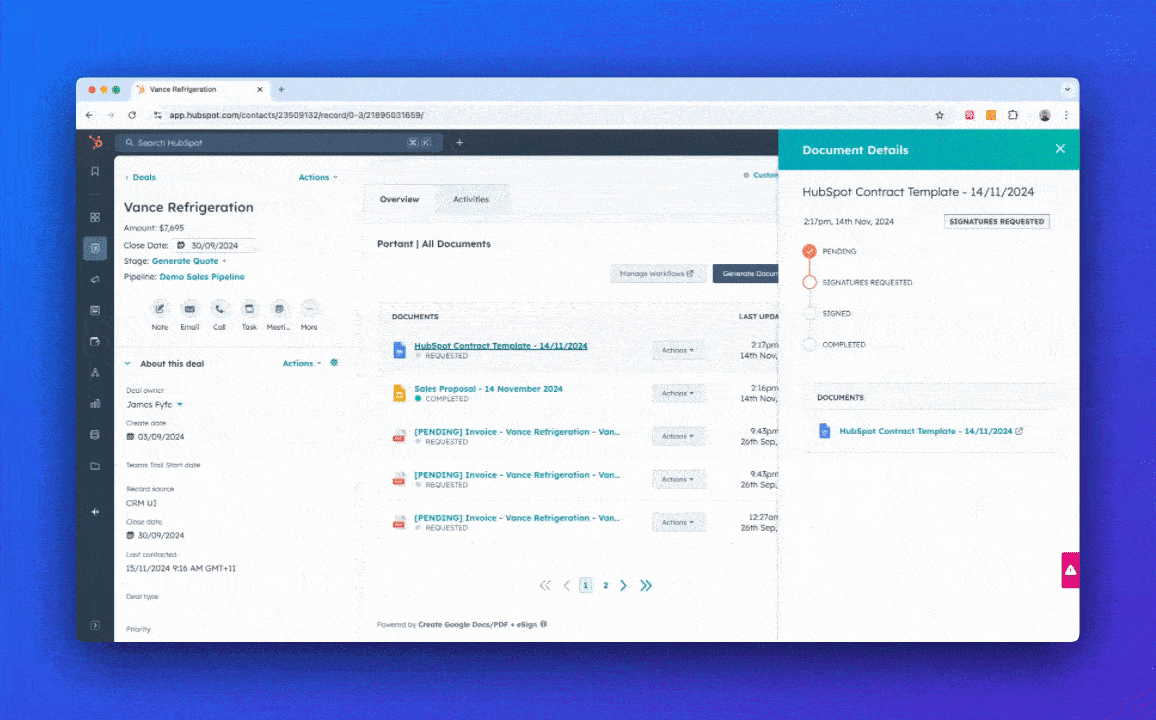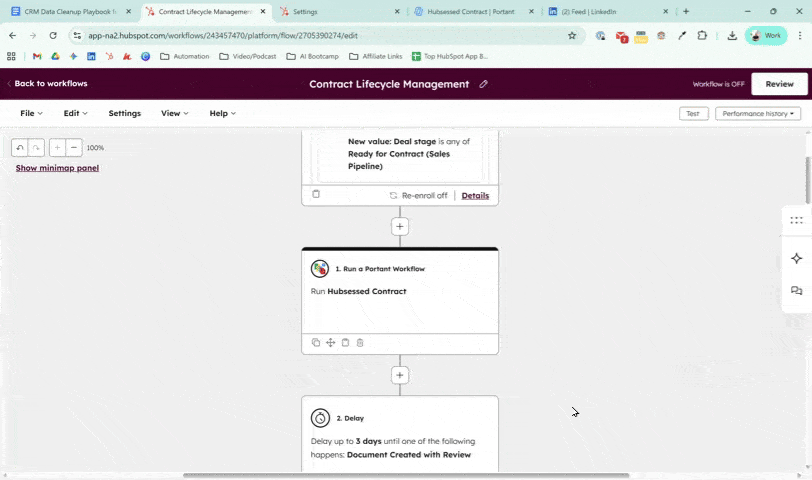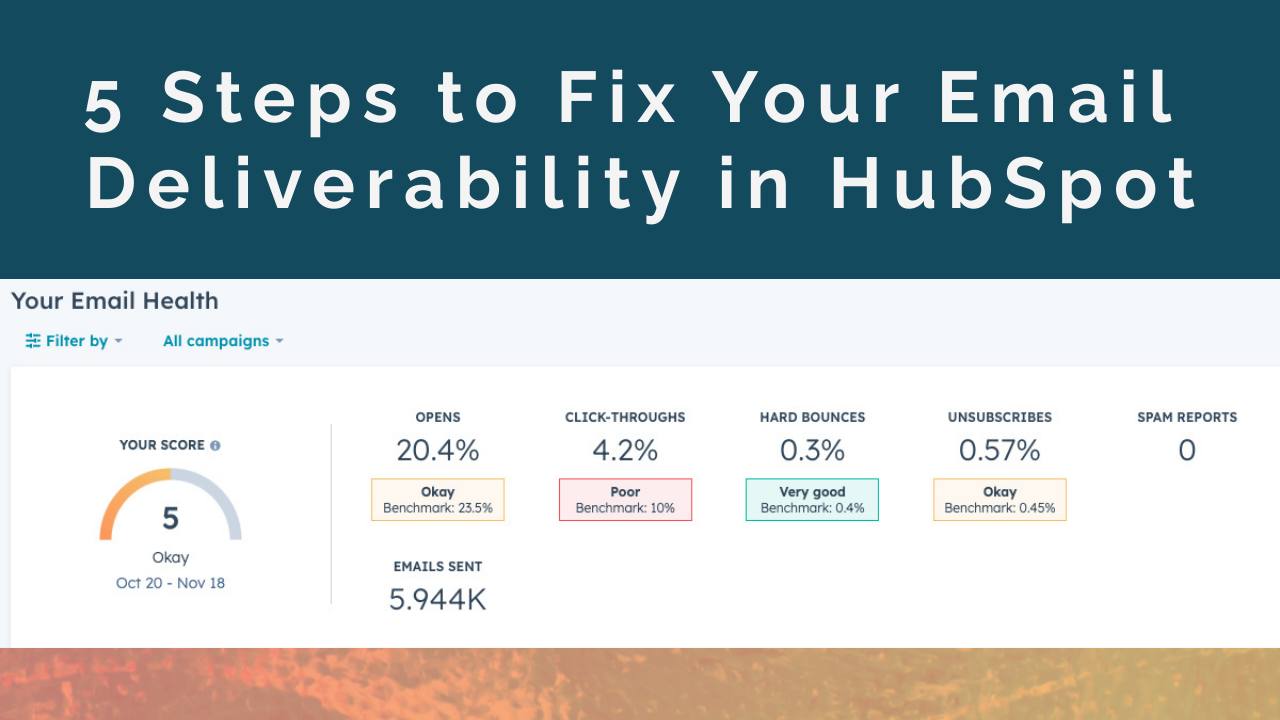Automate your Contract Lifecycle Management in HubSpot with Portant

Ever feel like the thing stopping you from making more sales is that each sale comes with hours of manual work creating, tracking, and following up on contracts, quotes, and invoices? It’s a huge time drain that pulls sales people away from actually selling.
You’re managing sales in HubSpot, but you’ve likely got another tool for quoting, and maybe a 3rd for contracting. This fragmented approach results in:
- Lots of manual work: Sales teams spend hours creating, tracking, and following up on contracts, pulling them away from selling.
- Tech stack complexity: Sales people have to frequently switch between tools, losing momentum and context in the process.
- Deals falling through the cracks: Manual approval and signing processes result in untimely follow ups that slow down deal velocity and put your chances of closing at risk.
These are problems for nearly every sales leader and sales team I have worked with in my career. I’ve used a ton of sales document management tools, including HubSpot’s native quote builder and a variety of third-party integrations. But most of them added more complexity than doing it all manually. None actually made my life easier until I recently tried Portant.
What is Portant?
Portant allows teams to create, manage, and automate document workflows in HubSpot. While you can use Portant for any type of document, the most common use cases are for sales documents like quotes, proposals, and contracts.
By far my favorite part of Portant is its focus on allowing you to stay in the tools you already use, rather than force you to learn a new set of tools.
Unlike other contract management tools, which often have their own built-in content management tools for designing documents, Portant has opted for the familiarity and simplicity of Google Docs (they also now support Microsoft Documents). In using it, I’ve found this to be incredibly refreshing. Not only do I not have to learn a new design tool, but my Google Drive already had manually created templates of many of the documents I wanted to create in Portant. It was extremely easy to adapt those existing templates to Portant with the insertion of a few personalization tokens.
The dedication to Google Docs goes so deep that, if you install Portant in HubSpot, it actually shows up in your integration list as “Create Google Docs/PDF + eSign.”
How to Generate and Track Contracts Without Switching Tools

Other than Google docs, the other way Portant allows your team to stay within the tools they already use, is through its deep integration with HubSpot. While many app integrations focus primarily on simple two-way data sync, Portant distinguishes itself by leveraging HubSpot’s extensibility with UI Cards and App Objects.
UI Extension Cards
UI Cards allow Portant to surface key document data and actions directly within the HubSpot interface. Users can view document statuses, take specific actions (like copying signature links or deleting drafts), and interact with Portant workflows, all without switching tabs or leaving HubSpot. This streamlined experience means that to the end-user, it feels like an organic part of HubSpot rather than a separate tool.
App Objects
App Objects take this even further by letting Portant introduce new, custom data objects into HubSpot. App Objects are a new feature from HubSpot that essentially function like a custom object created specifically for the app integration. The best part is that you don’t need an enterprise plan for an integration to be able to create app objects.
It’s hard for me to overstate how important this innovation is for HubSpot users. If you look at your current contact property list, how many custom properties were created by integrations? My guess is that number is in the triple digits.
App Objects allow developers to take all those custom properties and put them in an associated object rather than placing them on your standard objects. Not only does it reduce clutter, but it means that you can have multiple associated objects at a time and not have to worry about overwriting important data on the Contact record.
For example, Portant can associate multiple contracts simultaneously. This solves an issue where previously the custom properties (Like Document Status or Signing Link) would only reflect the most recently created document.
These objects also become native triggers for HubSpot automation and reporting, unlocking advanced workflows and document management capabilities that go well beyond what’s possible with standard sync-based integrations.
By using UI cards and App Objects, Portant is one of the few app companies in the HubSpot ecosystem to provide a truly user-first experience. It requires you to do a little bit of setup within their app, but after that, your team can more or less work exclusively within HubSpot, while still leveraging Portant’s document creation and automation.
Full Contract Lifecycle Management in HubSpot

Here’s how Portant streamlines the contracting process for sales and operations teams:
Seamless Document Generation
Using simple personalization tokens and dynamic formulas, Portant can merge HubSpot record data into your Google Docs templates. Contracts, quotes, or invoices are generated in a matter of seconds (about 12 seconds, by my count). Need to include conditional terms or custom calculations (like a sum of discounts across multiple line items)? Portant handles sophisticated merges and in-document formulas, pulling in all relevant data—and it stores each generated doc in Google Drive for easy access.
One downside is that I wasn’t able to configure the tool to organize the documents into an existing folder structure. So if you like to organize your drive by customer, that might require some manual work. But, sticking with Portant’s default organization is a price I am gladly willing to pay in exchange for the rest of the process being fully automated.
Centralized Contract Management
While the use of Google Docs is extremely convenient, Portant is more than just a document merge tool. It brings true contract lifecycle management capabilities natively into HubSpot.
Using the new App Objects, Portant creates a dedicated “documents” object in HubSpot. Every contract, quote, or agreement generated with Portant is automatically associated with the relevant deal, company, and contact records in your CRM. This means sales reps can see the full history of documents (drafts, sent, signed, and renewed) directly on the deal sidebar, without toggling between platforms. No more digging through email threads or shared drives to uncover the status of a contract.
Automated Approval and E-signature Workflows
Portant’s integration lets you trigger approval workflows, e-signature requests, or internal notifications using HubSpot’s native workflow builder. You can set up reminders to nudge signers, automate follow-ups for unsigned contracts, and update deal stages automatically once contracts are fully executed. Because Portant updates the status of each document back into HubSpot, your team always has the latest visibility, automation, and compliance tracking, without leaving your CRM.
Real-World Use Cases for Portant
Integrated Deal Stage & Contract Lifecycle Automation

One of the most powerful ways to leverage Portant within HubSpot is to build a contract lifecycle workflow right into your sales process. When a deal hits a certain stage, like “Ready for Contract,” a HubSpot workflow can automatically trigger Portant to generate a contract using your Google Docs template, merging in deal-specific data such as pricing and contact details.
The workflow can optionally check for internal review and approval before sending it out for e-signature, all from within HubSpot. As the contract is sent and signed, Portant syncs status updates back to HubSpot, allowing the workflow to automatically advance the deal stage, notify the team, or launch follow-up tasks such as onboarding.
While the initial setup requires some careful mapping and workflow configuration, this approach streamlines approvals and signing—reducing manual effort and keeping everyone aligned in real time.
Dynamic Billing Term Insertion
If you sell different products or service SKUs with varying billing terms, manually updating contracts for each scenario can be a time-consuming and error-prone process. Portant's tag formulas allow you to dynamically insert the correct billing terms into your Google Docs templates based on specific criteria from HubSpot.
Here’s how you could set it up with Portant’s tag formulas:

In this example, the formula checks the Line Items’ billing frequency from HubSpot. If the frequency is "Monthly," it inserts the corresponding termination clause. If the frequency is "Annual," it inserts the annual renewal clause. For any other billing frequency, it inserts nothing. This ensures that your contracts always reflect the accurate billing terms without manual intervention, reducing errors and saving your sales team valuable time.
Beyond billing term insertion, these in-template formulas can do all kinds of things. Another use case I came upon was adding a conditional discount to a quote depending on the total quote value.
Calculated ROI: Measuring Time Saved with Contract Automation

When thinking about ROI with a tool like Portant, you probably won’t win a bunch of deals that you would have lost without it (maybe you save a few from falling through the cracks). Instead, the main forms of value creation are in time-savings for your reps and deal acceleration.
There are two reports you can create to demonstrably show the value you’ve gained by implementing Portant.
Document Creation Time Savings
Each document you create via automation comes with time savings. Ask your reps, how much time were they spending creating contract documents? What about how long they were spending following up on getting a document approved and signed.
Say they spend 30 minutes creating each contract and another 20 following up. You can create a calculated property that looks at how many document App Object records are associated with deals and multiply that by 30 minutes to get document creation time savings. Then in another calculated property, multiply the number of document objects with a status of “signed” by 20 minutes. Add those together and you’ve got a damn good estimate of how much total time you are saving. You can even create reports that track by rep or give an average per-rep time savings.
Time-to-Close Comparison
When you build automation to do contract follow ups for you, you are going to massively accelerate your pipelines bottom-of-funnel. Not convinced about the value of Portant? Run a pilot with a few of your reps, while the others keep doing things manually. Then create a report showing the average time-to-close, comparing the results of those two groups.
By leveraging Google Docs for familiar document design and HubSpot's UI Cards and App Objects for deep integration, Portant eliminates the need to switch between platforms, streamlining workflows, reducing manual effort, and enhancing visibility into the entire contract lifecycle. This user-first approach not only saves valuable time for sales and operations teams but also accelerates deal closures, making Portant an invaluable tool for optimizing document-centric processes within HubSpot.
This newsletter was sponsored by Portant. Interested in sponsoring Hubsessed? Email [email protected].








Responses